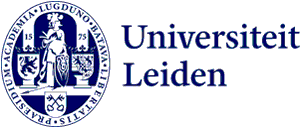
Second meeting of the alternative Humanities Campus: Process, think tank and inspiration visits
Around lunchtime on 28 October, 18 of our colleagues gathered in a room at the Lipsius, while 22 other colleagues settled in front of their computer for a one-hour update on the development of the alternative Humanities Campus. Dean of the Faculty of Humanities Mark Rutgers and Vice-Chairman of the Executive Board Martijn Ridderbos explained the process of creating an alternative Humanities Campus, and answered questions.
Mark Rutgers began the presentation with a review of the previous meeting, emphasising once again that the edges of the puzzle and the budget remain the same, and that the decision to introduce the new workplace norm was final. Rutgers proceeded by outlining the process that the Executive Board, the Faculty of Humanities, and the Real Estate directorate are following to arrive at a preferred variant for the alternative Humanities Campus.
The task at hand: a puzzle
For example, in the coming months, they will be considering the potential location of the new central teaching building, and asking whether it makes sense to add an extra floor to the Huizinga building, and which facilities can be located on the new campus. ‘In a session with the Faculty Board, we used Duplo building blocks to envision the various variants, and we’ve seen how different factors affect each other. It’s quite a puzzle,’ said Rutgers.
‘Will there also be room for labs?’ asked one of the attendees. Mark Rutgers answered that the possibilities for creating labs at the Faculty are being considered. In response to another remark, about options for research at the workplace not being included in the presentation, Rutgers answered that he fully trusts that there will be room for conducting research at the new campus. What’s more: ‘The new workplace norm is a generally accepted norm that is also used by the Dutch government.’
Martijn Ridderbos added: ‘In this phase we’re working together to create a spatial plan. In the next phase, the institutes can start thinking about how they want to organise this space.’
Think tank and inspiration visits
‘What will this spatial organisation look like per institute?’ someone asked. Mark Rutgers indicated that this would depend on the spatial layout and the available spaces within a building. ‘Once the preferred variant for the alternative Humanities Campus is known, we can look together at what is possible within a building. We have to think about how we can monitor quality, and we also need to consider occupational health regulations.’
This was followed by a remark from the audience that some department members may want to work on this together, possibly independently from their institute. Martijn Ridderbos was positive about this suggestion and emphatically invited the Faculty to work together to determine the inside of the puzzle (who will sit where and what will the workplaces look like; something that may well vary per institute/department). ‘To brainstorm with each other on how we can shape our work environment, we had the idea of setting up a think tank: a group of lecturers, researchers, support staff, and students who would help us think about how everything can be structured. We would also like to organise inspiration visits to other buildings to see and experience various work environments. For example at the Arsenal building, which was designed around the theme of “encounters”.’
Decision-making
The big question remains, of course: ‘What will a new design for the alternative Humanities Campus look like?’ The Executive Board will probably reach a final decision about the new preferred variant in the first or second quarter of 2022. It goes without saying that the Faculty Council and University Council will be closely involved in this process.
More information
If you have any further questions, you can contact us by e-mail at info-hc@hum.leidenuniv.nl.
And keep an eye on the staff website for the announcement of the think tank and the inspiration visits.
